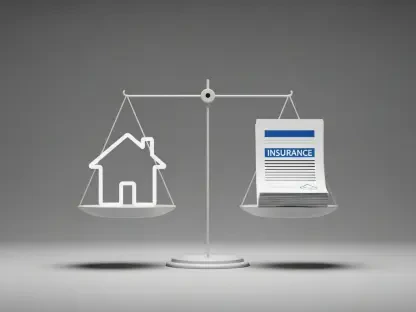In an age where economic uncertainties, evolving tax policies, and shifting market dynamics challenge traditional wealth-building strategies, families face a pressing need to safeguard their financial legacies for future generations. Amid the Great Wealth Transfer—projected to move a staggering $124 trillion in assets by 2048—innovative tools are essential to navigate this unprecedented shift. One such instrument, often underutilized by mainstream investors, is cash-value life insurance. This financial product, when strategically implemented, offers a powerful combination of long-term growth through compounding, significant tax advantages, and flexible liquidity options. Far from being just a safety net, it serves as a robust mechanism to preserve and transfer wealth across generations. By leveraging its unique benefits, families can address modern financial challenges while ensuring that their hard-earned assets endure for decades, providing security and opportunity for heirs in an increasingly complex economic landscape.
1. Unpacking the Benefits of Compounding Growth and Tax-Deferred Gains
Cash-value life insurance, particularly indexed universal life (IUL) policies, stands out as a vital tool for building wealth over time. Unlike term life insurance, which offers only a death benefit, IUL policies tie the cash value to market indices like the S&P 500. This connection allows for growth potential while protecting against losses through a 0% floor, ensuring that the cash value doesn’t decline during market downturns. Recent data highlights the rising popularity of these policies, with premiums reaching $3.8 billion in the latest reported year, reflecting a steady 4% annual increase. This growth underscores the appeal of compounding gains that can often surpass returns from traditional savings accounts or even certain retirement plans, making it an attractive option for those focused on long-term financial stability.
Beyond the growth mechanics, the tax-deferred nature of cash-value accumulation in IUL policies provides a significant edge. Policyholders can overfund these policies early on, allowing the cash value to grow exponentially over decades without the immediate tax burden that impacts other investment vehicles. This tax-deferred growth means that returns are not eroded by annual tax obligations, enabling a more substantial buildup of wealth. For families aiming to transfer assets to future generations, this feature ensures that a larger portion of the accumulated value remains intact, free from the drag of recurring taxation. It’s a strategic approach for those who prioritize maximizing wealth preservation while minimizing fiscal liabilities over extended periods.
2. Leveraging Tax Benefits for Efficient Wealth Transfer
One of the standout advantages of cash-value life insurance lies in its ability to facilitate tax-efficient wealth transfer. The death benefit paid to beneficiaries is generally income tax-free, bypassing the heavy burden of estate or inheritance taxes that can diminish family assets. With the estate tax exemption set to decrease to $6.8 million per individual in the current year, more families risk exposure to significant tax liabilities—sometimes as high as 40-45% on amounts above the threshold. Utilizing cash-value policies helps mitigate these risks, ensuring that heirs receive the full intended value of the inheritance without substantial reductions due to federal or state levies, preserving the integrity of the family’s financial legacy.
Further enhancing this benefit, strategies like irrevocable life insurance trusts (ILITs) can be employed to exclude the death benefit from the taxable estate altogether. By placing a policy within an ILIT, the proceeds are shielded from estate taxes, offering a powerful solution for high-net-worth families. For instance, a family with a $15 million estate could use an ILIT-funded IUL policy to transfer over $8 million tax-free to heirs while protecting the remaining assets under the exemption limit. This approach not only reduces tax exposure but also provides peace of mind that the wealth transfer aligns with the family’s long-term intentions, safeguarding resources for future generations against unforeseen fiscal challenges.
3. Ensuring Liquidity and Versatility in Financial Planning
Cash-value life insurance offers remarkable flexibility through its liquidity features, allowing policyholders to access funds during their lifetime without disrupting other savings. Through tax-free loans or withdrawals, the cash value can serve as a supplemental income stream for retirement or unexpected expenses like medical costs. This access ensures that policyholders are not forced to deplete retirement accounts such as IRAs or 401(k)s during financial strain. In an era of rising healthcare expenses and market volatility, this liquidity acts as a critical buffer, enabling individuals to maintain their standard of living while still preserving a death benefit for their beneficiaries.
This dual-purpose structure—serving both retirement needs and legacy goals—makes cash-value policies uniquely versatile. Consider a scenario where a 65-year-old policyholder with a $2 million cash value takes a $200,000 loan to address urgent medical needs or withdraws $100,000 to support a family venture. These actions can be executed without diminishing the policy’s death benefit, ensuring that heirs remain protected. This adaptability positions cash-value life insurance as a dynamic asset in comprehensive financial planning, bridging the gap between immediate personal needs and the enduring goal of intergenerational wealth transfer.
4. Exploring Practical Examples of Wealth Transfer Success
Real-world applications of cash-value life insurance reveal its transformative potential in securing family legacies. Take the case of a Gen X investor who inherited $5 million and channeled it into an IUL policy with a 12% cap rate. Over 15 years, the cash value expanded to $8.2 million, while the death benefit guaranteed a $10 million tax-free transfer to their children. This example illustrates how strategic policy design can amplify inherited wealth, turning a substantial sum into an even greater legacy. It highlights the power of compounding growth and tax-free benefits in creating a financial foundation that spans generations.
Another compelling instance involves a millennial couple who inherited property and funds, opting to secure a Survivorship Life policy with the latter. This policy type, designed for two individuals, ensured a tax-efficient wealth transfer to their offspring while maintaining liquidity for estate planning needs. By integrating the policy into their broader financial strategy, the couple addressed both immediate and long-term objectives. These cases demonstrate that cash-value life insurance is not a one-size-fits-all solution but a customizable tool that, when tailored to specific circumstances, can effectively preserve and grow wealth for diverse family structures.
5. Implementing Key Strategies for Optimal Results
To fully harness the potential of cash-value life insurance, families must adopt targeted strategies aligned with their financial goals. First, estate tax mitigation through ILITs is essential, as it removes the death benefit from the taxable estate, reducing exposure to significant levies. Second, policies can be structured for equitable inheritance distribution, ensuring fair financial support across heirs, particularly in blended families or households with multiple children. Third, establishing trusts for special needs children guarantees lifelong care without jeopardizing eligibility for public benefits. Finally, leveraging cash value as a retirement income source complements other assets, providing a balanced approach to financial security in later years.
Collaboration with financial professionals is critical to executing these strategies effectively. Tailoring policies like IULs to maximize cash value growth while aligning with estate planning objectives requires expert guidance. Additionally, for those in advanced financial stages, the tax advantages and disciplined savings component of whole life policies can outweigh their higher costs. By integrating these steps—estate tax planning, inheritance equalization, special needs support, and retirement integration—families can create a robust framework that not only preserves wealth but also adapts to evolving needs across generations.
6. Gaining Insights from Industry Experts
Expert perspectives shed light on the nuanced application of cash-value life insurance in wealth transfer planning. Laura Gariepy, a licensed life insurance agent, emphasizes the importance of customized policy structuring. According to her, IULs must be carefully designed to optimize cash value growth and align with specific estate planning goals, ensuring that the policy meets both current and future needs. Her insight underscores the necessity of professional input to navigate the complexities of these financial instruments, avoiding common pitfalls that could undermine their effectiveness.
Complementing this view, Neil Solarz, a director at a prominent financial firm, highlights the strategic value of whole life policies for certain demographics. He notes that while these policies can be expensive, their tax benefits and forced savings mechanism make them a prudent choice for individuals in later financial stages. This perspective reinforces the idea that cash-value life insurance is not a uniform solution but rather a spectrum of options that can be tailored to individual circumstances. Together, these expert opinions advocate for informed decision-making to maximize the protective and growth-oriented potential of these policies.
7. Building a Lasting Legacy Through Strategic Planning
Reflecting on the journey of wealth preservation, it is evident that cash-value life insurance plays a pivotal role in navigating the complexities of the Great Wealth Transfer. Its unique blend of compounding growth, tax efficiency, and liquidity provides families with a reliable means to secure their financial futures. Over time, countless households have adopted these policies to shield their assets from tax burdens and market uncertainties, ensuring that their legacies remain intact for future generations. The strategic integration of these tools into broader financial plans has proven to be a cornerstone of intergenerational security.
Looking ahead, families are encouraged to take proactive steps by consulting with financial advisors to explore how cash-value policies can fit into their unique circumstances. Evaluating options like IULs or whole life insurance, and incorporating mechanisms such as ILITs, can pave the way for robust estate planning. As economic landscapes continue to evolve, acting now to embed these solutions into long-term strategies will empower families to protect their wealth against future challenges, creating a lasting impact that transcends generations.









